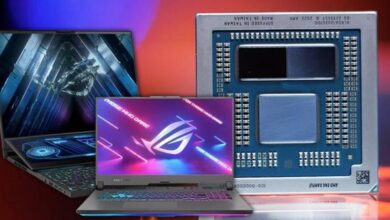
If we look back in the history of computing we will see true rarity, most of them peripherals and components that have ended up in disuse due to the fact that they have been replaced or have simply been integrated into other components. However, one of the biggest oddities were the Intel Overdrivewhich were a way to upgrade the processor, with another CPU?
At present we have very much assumed that when a new generation of processors appears, the most likely thing is that we will have to change the motherboard and with this the socket where to place the processor will also change. However, Intel in the early 90s had an idea that was less strange. Neither more nor less than creating a chip that was another’s patch, that is, if we had a 486 we could convert it into a Pentium without having to buy a new motherboard. That is to say, it would be as if they were now launching a model of the current Intel Core for old motherboards.
What were the Intel Overdrive?
A very popular configuration among the popular ranges in the early 90s were Intel motherboards with a 486SX as a processor, a trimmed version of said CPU in which the floating point unit was disabled. Well, at that time motherboards that had said processor soldered on the board and next to it included a Socket in which to place another that was compatible.
To give you an idea, it was as if you were now buying a motherboard with a Z790 chipset and including a Core i3-13100 in BGA mode, that is, soldered on the same motherboard, but with the LGA1700 Socket bare and without anything. You would only need to acquire, for example, an i9-13900K to place it on said board, and when it was automatically installed, the board’s processor would be completely disabled.
Well, the concept of the Intel Overdrive was precisely something, but its name was due to the fact that they gave the ability to jump a generation ahead and have everything and turn a 486 into an Intel Pentium. Mind you, such processors were hard to see and not in high demand. Not because they are not useful, but because they are extremely expensive compared to renewing the motherboard and buying a new processor. In particular, the problem is that not all motherboards support it.
How did it work?
An Intel Overdrive was a much more complex piece than a simple processor, not only due to the fact that it included a serial heatsink, but also due to the fact that internally what it included was more complex analog circuitry that allowed voltage signals to be transformed. and clock speed to something that the previous generation motherboard could handle without problems. Due to this, its manufacture was more complex than a conventional processor.
There came a point where due to the low demand for them, Intel stopped manufacturing them, the reason for this is that their initial existence was due to the fact that the cost of hardware was much higher in the first half of the nineties than in the second. In other words, they were born out of Intel’s own fear that high prices would curb demand for its chips and as a way to encourage purchase among old users, who ultimately decided to choose the full update. That is to say, to renew the motherboard, processor and the rest of the components to the computer changer.
could i come back
Well, we don’t believe it, Intel made a bad reading of the market in the 90s that led to the release of the Intel Overdrive and we have already gone through several different recessions where the Overdrive has not even been mentioned, so unless we surprise with something unexpected such processors will continue to be a rarity of the past.




